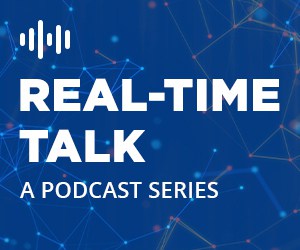
The real-time-enabled Internet of Things (IoT) isn’t just about devices phoning home back to their creators for regular status checks. As RTInsights Industry Insights Editor Joe McKendrick explains here, another budding application for the IoT may be the ‘Internet of Tools’ opening up new ways to achieve precision on the factory floor.
A recently launched collaborative effort called Track and Trace (T&T) seeks to develop the ability for manufacturers to remotely adjust the settings and tolerances of the tools and machines used on the production floor. The effort, part of a testbed hosted by the Industrial Internet Consortium (IIC), is being spearheaded by Bosch, Tech Mahindra and Cisco (which are all IIC member companies).
Currently, one of the T&T demonstration projects underway is a system that determines the positions of connected tools – such as nutrunners – on production floors. Positioning information is used to automatically select the correct torque for respective tasks for the nutrunners, making it possible to tighten safety-relevant bolts with exactly the required torque, for example. It is also possible to automatically document these settings to ensure and test product quality.
The concept is expanding to enable the integration of a variety of industrial power tools used to drill, tighten, measure and solder into an overall system of networked tools. The potential applications of connected handheld nutrunners, riveting tools and measuring equipment include the construction and maintenance of engines and aircraft.
IoT-connected Tools
Some tools are already ready with sensors and WiFi access to join the IoT while others can be retrofitted, according to Dirk Slama, Project Manager at Bosch. As tools are brought into the environment, they are ‘paired’ with the system in the same vein as Bluetooth devices being paired to mobile phones. “Intelligent tools like the Rexroth Nexo [cordless nutrunner], which has an onboard computer and are WiFi-enabled can register automatically,” Slama explained to RTInsights. “For existing tools, we are using a small, Bluetooth-enabled tag.”
The tools are connected with each other and with the production data for the products to be manufactured. The tool’s positioning information will inform users, for example, that the tool is located at the vertical stabilizer. Backend software automatically sends instructions that specify the torque needed to tighten bolts for that component. Additional benefits include the ability for companies to access a detailed overview of the conditions of their tools at all times. This can enable the automation of a number of routine tasks such as the replacement of wear parts on power tools (after a specified number of rotations or hours of operation).
The applications are virtually unlimited and may extend well beyond tools on the production floor, Slama pointed out. “We started out with production-floor tools but are now also extending this to construction sites,” he said, noting that production tools more readily lend themselves to connected environments, at least initially. “Production-floor tools tend to be more advanced, equipped with onboard intelligence,” he said. “Construction tools are often more basic; here we are using the new tracking tag.”
The design and assembly of complex industrial and consumer goods requires exacting work. Often, bolts must be tightened with precisely the right amount of torque. In aircraft construction, for example, there are thousands of bolts that must be tightened and precisely documented. “We are able to record the torque used to tighten hundreds of thousands of bolts, for example, and store that information in a database,” said Slama. “The information makes it possible to quickly identify any discrepancies and it provides users with clues as to the possible causes of faults.”
A range of industries can benefit from the applications as well. “For the Nexo, we can record the torque and angle of each tightening process and match it with a control curve. So any industry with high quality requirements is a good fit: OEMs, automotive, trains and aircraft,” said Slama. “For construction companies, the focus is initially more on efficiency, although we will also be seeing more focus on quality once we can equip the tracking tags with more intelligent sensors, thus supporting use cases that go beyond simple tracking.”
Want more? Check out our most-read content:
Frontiers in Artificial Intelligence for the IoT: White Paper
Research from Gartner: Real-Time Analytics with the Internet of Things
How Real-Time Railroad Data Keeps Trains Running
Operational Analytics: Five Tips for Better Decisions
Why Gateways and Controllers Are Critical for IoT Architecture
Liked this article? Share it with your colleagues!




























